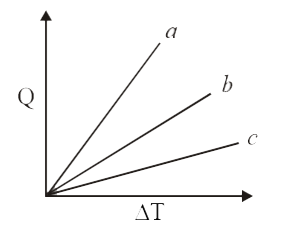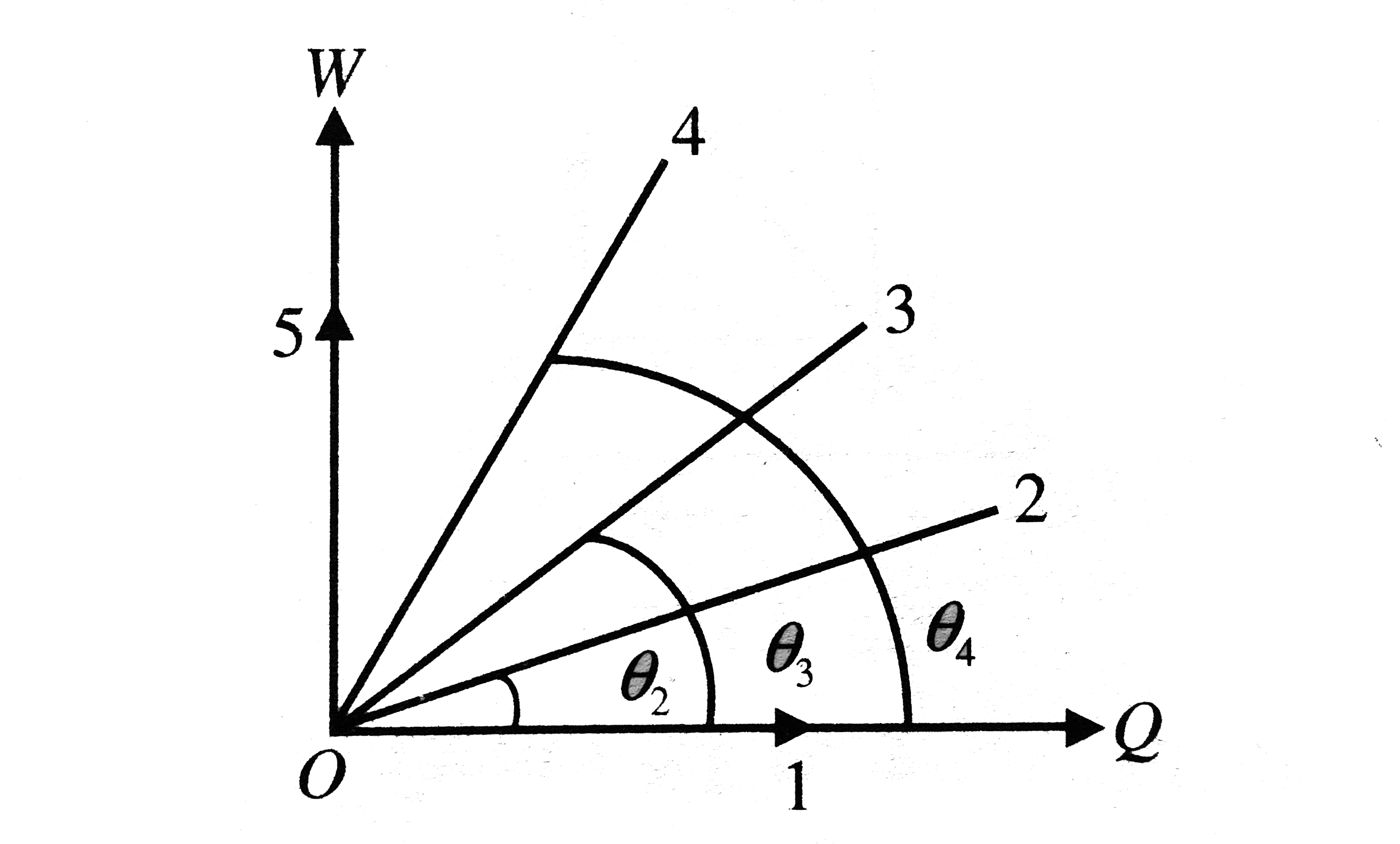The amount of heat supplied to an ideal gas is laid off on the horizontal axis and the amount of work performed by the g-as is laid off on the vertical axis. One of the straight lines in the ligure is an isotherm and the other two are isobars of two gases. The initial states of hoth gases (pressure, temperature, volume) are the same, and the scales on the two axes coincide. Which straight line corresponds to which process? How many degrees of freedom does each gas have? (Vibrational degrees of freedom are not to be taken into account.) The graphs of what processes coincide with the coordinate axes?
Step by step video & image solution for The amount of heat supplied to an ideal gas is laid off on the horizontal axis and the amount of work performed by the g-as is laid off on the vertical axis. One of the straight lines in the ligure is an isotherm and the other two are isobars of two gases. The initial states of hoth gases (pressure, temperature, volume) are the same, and the scales on the two axes coincide. Which straight line corresponds to which process? How many degrees of freedom does each gas have? (Vibrational degrees of freedom are not to be taken into account.) The graphs of what processes coincide with the coordinate axes? by Physics experts to help you in doubts & scoring excellent marks in Class 11 exams.
Topper's Solved these Questions
Similar Questions
Figure shows the variation in temperature (DT) with the amount of heat supplied (Q) in an isobaric process corresponding to a monoatomic (M), diatomic (D) and a polyatomic (P) gas. The initial state of all the gases are the same and the scales for the two axes coincide. Ignoring vibrational degrees of freedom, the lines a, b and c respectively correspond to
 View Solution
View SolutionA sample of an ideal diatomic gas is heated at constant pressure. If an amount of 100 J of heat is supplied to the gas, find the work done by the gas.
View Solution
Knowledge Check
- Question 1 - Select One
Certain amount of heat supplied to an ideal gas under isothermal conditions will result in
Arise in temperature qBdoing external work and a change in temperatureCdoing external workDan increase in the internal energy of the gas - Question 2 - Select One
Figure shows an isochore, an isotherm, an adiabatic and two isobars of two gases on a work done versus heat supplied curve. The initial states of both gases are the same and the scales for the two axes are same.
 AStraight line 1 corresponds to an isochoric process.BStraight line 2 corresponds to an isobaric process for diatomic gas.CStraight line 4 corresponds to an isothermal process.DStraight line 5 corresponds to an isothermal process.
AStraight line 1 corresponds to an isochoric process.BStraight line 2 corresponds to an isobaric process for diatomic gas.CStraight line 4 corresponds to an isothermal process.DStraight line 5 corresponds to an isothermal process. - Question 3 - Select One
If different ideal gases are at the same temperature, pressure and have same volume, then all gases have same
ADensityBNumber of moleculesCMost probable speedDInternal energy per mole
Two samples A and B of the same mass of a gas ,initially at the same pressure ,temperature and volume are compressed to half the original volume .A isothermally and B adiabatically .The final pressure of A is
View SolutionFor an ideal gas of fixed amount, the initial pressure and volume are equal to the final pressure and volume
View SolutionTwo gases have the same initial pressure, volume and temperature. They expand to the same final volume, one adiabatically and the other isothermally
View SolutionTwo samples of gas, one of argon and one of helium, have the same pressure, temperature and volume. Which statement is true assuming both gases behave ideally?
View SolutionThe molar gas constant is the same for all gases because at the same temperature and pressure, equal volumes of gases have the same
View Solution
